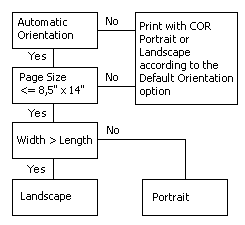Name |
This name identifies the TwiNet device to the users. The default name
is TwiNetxxxxxx, where xxxxxx are the last six digits of the TwiNet device
serial number. |
Serial Number |
Every TwiNet device is uniquely identified by its serial number. The
serial number is found on the under side label of your print server. This
field cannot be modified. |
MAC Address |
This is the MAC address of the TwiNet device. This field cannot be
modified. |
IP Address |
Specify the IP address for your TwiNet device in the format xxx.xxx.xxx.xxx. You should acquire a unique and unused IP
address from your Network Administrator in order to prevent conflicts with
other network devices.
Notes: If DHCP is enabled, your manual
settings might be overridden when you perform a restart. To make sure that
this will not happen, you are advised to disable DHCP when you are setting
the IP address manually.
Important! If you change the IP address
you will lose contact with the TwiNet device. You must enter the new IP
address of the TwiNet in the location field of your Web browser to
continue to configure and manage the TwiNet via the Web
browser. |
Subnet Mask |
Specify the Subnet Mask used for determining when the traffic should
be sent via a router. This number combined with the IP address identifies
on which network the TwiNet device is located. The normal class C subnet
mask value is 255.255.255.0. |
Default Gateway |
Specify the IP address for the default Gateway. All traffic directed
outside the local network, defined by the Subnet Mask, is sent to the
default Gateway. Any re-routing via other routers is done automatically.
The setting 0.0.0.0 indicates that no default Gateway is set. |
Use DHCP |
A DHCP Server automatically set the IP address to each device at
startup. If you want to use this feature (not recommended for a Print
Server device), select Yes.
Default value = No |
Automatic IP |
This option allows the IP address of the TwiNet device be set by using
the ARP+PING command.
Default value = Yes |
FTP Port |
Identify the FTP Port value for the TwiNet device. The default value
is 21 and cannot be modified. |
LPD/Windows Port |
Identify the LPD Port value. The default value is 525 and should not
be modified. |
TwiNet Browsing Port |
Identify the Device Browsing Port value, used to access the TwiNet
device via a Browser. The default value is 1680 and should not be
modified. |
Parallel Port Sharing Timeout |
Specify the time-period, in seconds, that the TwiNet device keeps the
Printer Parallel Port allocated to the Host after receiving the last data
of a print job. The default value is 30 seconds. |
DNS Server IP Address |
Specify the IP address of the DNS server. The DNS server is used for
identifying computers with host names instead of IP
addresses. |
